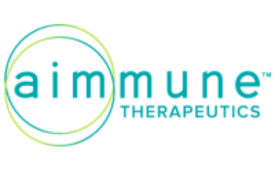
Aimmune Therapeutics, Inc. (AIMT) has risen more than 80% since early September (from under $20 to near $34 now) in anticipation of the FDA approval of Palfrozia – previously known as AR-101 – as the first ever approved treatment for children who suffer from peanut allergies. But even at current levels, the company is significantly undervalued and has room to increase above $60 in the coming year.
What is Palforzia? Who is it for? How is it administered?
AIMT is seeking FDA approval for Palforzia to treat patients with peanut allergies ages 4-17.
It’s long been recognized that an effective way to treat allergies is to expose patients to the very thing they are allergic to, first in tiny amounts and then steadily increasing the dosage, in order to desensitize patients to the allergen. Palforzia is a treatment whereby peanut protein – 12% defatted peanut flour – is given to children allergic to peanuts.
Palforzia is a pill filled with precisely-measured amounts of peanut protein. One peanut has about 250-300 mg of peanut protein. Palforzia starts with pills that have 0.5 to 6.0 mg of such protein (as little as 1/500th of a peanut) and then steadily increases the dose to 300 mg (about one peanut).
One pill is taken daily, with the pill opened and sprinkled onto food. The dosage increases once every two weeks. The first pill at each new dose must be administered in a doctor’s office under supervision to ensure that any adverse event (AE) can be observed and quickly treated.
After treatment concludes, patients continue to take a daily maintenance pill.
How does Palforzia compare to other allergy treatments?
A staple of allergy treatments today involves patients regularly visiting an allergists office to receive shots. Fortunately for the millions of children who need to be treated